Prof. Dr. Ercument Genc works as a full-time professor in the Department of Fisheries and Aquaculture Engineering, Faculty of Agriculture at Ankara University, as well as a member of the National Committee on Registration of Aquatic Genetic Resources since 2014 as an expert in aquatic organisms. His research has been focused on fish, mollusks, and crustacean parasites, fish diseases, nutrition, histomorphology since 2000, and DNA barcoding for microbiota analysis in recent years.
Having authored more than 62 peer-reviewed research articles in international journals and participated in 27 projects (project leader in 10 of them), he was also a member of the WWF and the European Aquaculture Society 2013-2019 terms.
His main research interests are immune-stimulants, functional food additives, biofloc technology, liver and intestine histopathology of Finfish and crustacean species, as well as specific health management in aquaculture.
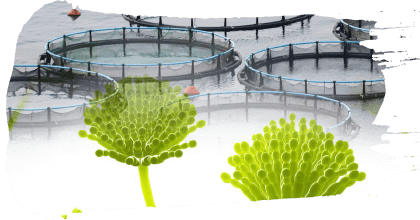

Prof. Genc, what motivated you to explore the fascinating field of health management in the aquaculture industry?
I think it is crucial to understand the biology, anatomy, physiology, nutritional requirements, and disease agents of aquatic organisms (Fish, Crustacea, Bivalve), both in wildlife and the culture conditions, to be able to implement measures that allow us to manage the environments and nutrition in aquaculture, thus contributing to responsible rearing within a holistic approach in prevention and control.
Aquaculture is a branch of the agricultural sector that is carried out in aquatic environments. It is prominent in its role of providing biologically essential raw and processed food. This sector is continuously developing, with increasing momentum to meet nutritional and hobby needs, and it is directly related to economic and food security.
I strive to ensure that responsible aquaculture practices are put into practice.
⇰ For this purpose, I am focused on researching the possibilities of using limited water resources in aquaculture and reliable aquaculture research within the scope of undergraduate graduation, masters and doctoral thesis for the students I supervise.
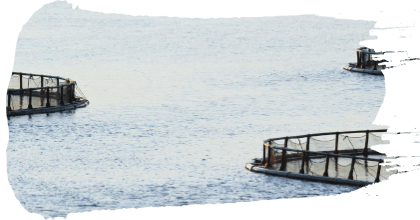

The aquaculture industry is expected to experience rapid growth over the upcoming years as a result of an increase in the need for animal protein to feed the global population. What are the major challenges for this industry in terms of fish health and food/feed safety?
We knew that the increasing world population’s animal protein consumption would increase. Scientists working on aquaculture and health management strive to meet this need as cost-effectively as possible and we have gained experience in the difficulties of meeting the ever-increasing protein demand by farming in inland waters and seas.
![]() Unfortunately, the world we live in does not have unlimited resources.
Unfortunately, the world we live in does not have unlimited resources.
Another problem the industry faces is producing compound feed, preserving the quality of the nutrients and dealing with the difficulties of safely storing tons of formulated feed until they can be used without spoilage due to microorganism activity.
This problem also has significant effects that can directly threaten the sustainability of fish farming.
Ensuring the safety of formulated high-quality feed, produced with our planet’s limited resources, is also valuable in terms of socio-economic welfare and sustainable use of the environment.
⇰ It will be vital for the future of human beings to increase the production of aquatic animal organisms directly and indirectly using responsible breeding practices while ensuring the absence harmful residues and good nutritional value.
The European Union directives recommend reducing the use of antibiotics and disinfectants and have played an essential role in guiding fish health protection studies.
Following this decision, the aquaculture and feed sectors accelerated the development of feed additives to increase healthy aquaculture opportunities.
have observed that studies on prebiotic, probiotic, symbiotic, organic acids, digestive tract regulators, immunostimulants, and toxic substance-binding substrates, which have functional characteristics, are increasing proportionally.
 At the center of all these studies is the expectation of contributing to all stakeholders of aquaculture by considering food safety and food security principles.
At the center of all these studies is the expectation of contributing to all stakeholders of aquaculture by considering food safety and food security principles.


Nutrition is a key factor when it comes to obtaining optimal results in the aquaculture industry. However, aquafeed is an important source of pathogens and toxins, such as mycotoxins, that can negatively affect the health and performance of fish and other aquatic animals. Which are the main pathogens and contaminants that should be controlled in raw materials and aquafeed to avoid these problems?
Feed costs constitute 60-70% of the operating expenses in the aquaculture industry and obtaining optimal results from the feed is possible if the grown species is healthy.
Like other animal organisms, fish spend energy in the food they consume for four different functions:
- 1. Routine metabolic activities
- 2. Fighting against diseases
- 3. Growth
- 4. Reproduction
For economic profitability, the performance of aquaculture yield per unit area and unit time is calculated periodically.
Calculations show us that efficient and profitable aquaculture is made under conditions where the fish do not get sick and reproductive energy is saved.
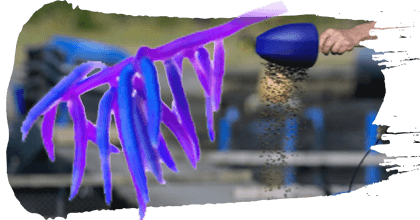
There is a very low probability of the losses arising from the contamination of dry extruded feed formulated with pathogenic organisms in aquatic organism cultivation.
 We know that the shelf life of feed can be extended by storing them in cold and low humidity conditions to protect them from microorganisms that cause feed deterioration and toxins. However, storage in cold conditions is not rational as it is very costly to apply in practice.
We know that the shelf life of feed can be extended by storing them in cold and low humidity conditions to protect them from microorganisms that cause feed deterioration and toxins. However, storage in cold conditions is not rational as it is very costly to apply in practice.
⇰ To avoid problems arising from feed spoilage, regular monitoring of compounds that may impair health conditions in raw materials and produced feed also includes very costly analyses.
Food contamination with mycotoxins is an essential risk for health, and it requires immediate prevention for the sector as it causes economic losses. However, it is difficult to prove that an aquatic organism (fish or crustacean) died due to mycotoxicosis.
| Even when mycotoxin derivatives are detected in feed, and necrotic formations in the liver tissue are observed, it will still be controversial if the main agent is a mycotoxin-producing microorganism. |
The root of this debate lies in the fact that the effects of toxins of fungi or mold species that cause feed degradation can be confused with pathologies originating from many other disease agents and compounds that alter water quality, pesticides, and disinfectants.
Researchers began to apply the first regulations for mycotoxins in the 1960s, especially for aflatoxins. Since 2003, many countries have started to develop control mechanisms that determine the limits of mycotoxins for human and animal foods in their local regulations.
Anater et al. (2016) drew attention to how fish are affected by mycotoxins despite these regulations and that comprehensive studies on the rates of residue levels have not been conducted.


What are the main symptoms and lesions that can be indicative of infection and/ or exposure to the mycotoxins?
I would like to recommend the readers of mycotoxinsite to read the articles I have suggested in the references listed at the end of this interview when they have time so they can make a detailed analysis and evaluation.
Mycotoxins are released into the environment (as secondary metabolites produced by mold), especially during the storage of plant-derived products under conditions that favor the growth of mold species. In other words, mold can grow directly in raw materials and pelleted feed, which is the final product.
 Researchers emphasize that unprecedented steps should be taken to raise awareness of mycotoxin-related problems in the aquaculture sector.
Researchers emphasize that unprecedented steps should be taken to raise awareness of mycotoxin-related problems in the aquaculture sector.The proportions of plant-based raw materials used in fish feeds have increased, especially in recent years. However, it is also a fact that using fewer vegetable raw materials in fish feed as a standard approach does not reduce the formation of mycotoxins.
Gonçalves et al. (2017) and Cheli et al. (2013) found that mycotoxins (types B and A, trichothecenes, and fumonisins) produced by Fusarium species can appear in plant-based feed raw materials before harvest.
In addition, Penicillium and Aspergillus can reproduce in harvested products and feed during storage. Their toxins, aflatoxin (AF) and ochratoxin A (OTA) are also quite harmful.
The presence of mycotoxins in the feed can cause mortality depending on the amount. However, as it is persistently stated, the absence of specific markers indicating that death is caused by mycotoxin makes it difficult to prove the mycotoxin-induced losses of aquatic organisms.
Findings from mycotoxin-related deaths are similar to problems caused by anti-nutritional factors and other disinfectant-related problems. Unfortunately, only a few specific works of literature are available on the subject.
One of the most common pathologies can be observed in liver tissue. Cloudy necrosis in liver tissue has been reported, especially due to aflatoxins.
⇰ As it is known, the liver is a vital tissue and, in the case of necrosis, it can cause systemic problems, deterioration of liver functions, and ultimately death.


Although raw materials and aquafeed may be routinely screened for pathogens and toxins, it is not always possible to completely avoid their presence. In these cases, what strategies can fisheries implement to minimize their impact of fish health and productivity?
The consensus of many researchers is that one of the most important problems faced by the animal husbandry industry on land and in water is the mycotoxin problem, which is a result of the widespread use of plant-based raw materials due to the reduction of animal product ratios used in diet formulation.
Feed factories perform mycotoxin analyses of the raw feed materials, which has significant protective effect, while the sector carries out production in a way open to inspecting local and international reference laboratories.
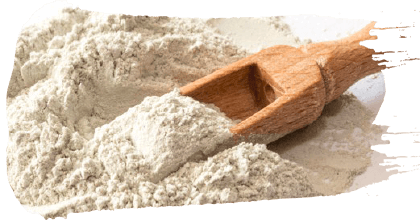
Binder (2007) showed that the main way to minimize the toxic effects caused by mycotoxins is to include mycotoxin binding agents in feed. Today, this information still maintains its validity.
Aluminium silicate, clay and zeolite mixed into raw feed materials are the most common mycotoxin binding materials.
The mycotoxin binding levels of these materials and their resistance to different PH levels in the digestive tract may differ.
Aflatoxin B1 binds more strongly to bentonite.
However, since it can also bind some vitamins, studies are being carried out in this field, focusing on mycotoxin binding rates as well as maintaining the digestibility of the feed without reducing its nutritional value.
Researchers also argue that the chemical makeup of different groups of mycotoxins is such that it may be difficult to neutralize all mycotoxins equally by using a single type of binder.
As a new approach, biotransformation has also started to be discussed in this process.
The efficacy of specific enzymes produced by some microorganisms for mycotoxin detoxification is being evaluated. However, no studies on this subject have been carried out regarding fish or other aquatic organisms yet.


One of your lines of research has focused on the benefits of including a mycotoxin binder to enhance the growth performance of gilthead seabream. Could tell us about the results of this study?
In this study, we tried to determine the effects of a commercial clinoptilolite (Minazel® Plus, MP, 0, 1, 1,5, 2, 2,5 y 3 g kg-1) at six different doses on the health and production parameters of gilthead sea bream (Sparus aurata).
In this study, surface-modified Minazel® Plus was carried out under controlled conditions for 60 days.
 Higher final weight, weight gain, and specific growth rate were obtained between all experimental groups, compared to 2 g kg-1 MP, the control group (p < 0.05).
Higher final weight, weight gain, and specific growth rate were obtained between all experimental groups, compared to 2 g kg-1 MP, the control group (p < 0.05). The feed conversion rate was lower and, therefore, better in all MP supplemented groups than in the control group (p < 0.05).
The feed conversion rate was lower and, therefore, better in all MP supplemented groups than in the control group (p < 0.05).
There was also no significant effect on survival rates between the groups, nor were there significant differences between the groups in terms of body indexes such as the viserosomatic and hepatosomatic indexes, or blood parameters (hematocrit, hemoglobin, white blood cell, red blood cell, glucose, and alanine aminotransferase and aspartate aminotransferase enzymes).


What are the key factors that we should keep in mind in terms of feed safety during processing, transformation and storage of the ingredients used in aquafeed manufacturing? And once the feed arrives at the fishery?
Risk management practices should be considered after risk assessment regarding the presence of mycotoxins in feed raw materials.
Among the steps prioritized in the risk assessment of mycotoxins:
- 1. Potential hazards and threats are defined.
- 2. The hazardous characteristics are detailed and information about its characterization is compiled.
- 3. The assessment of exposure status to mycotoxins is applied.
Sampling should be done to investigate the presence of mycotoxins from feed raw materials.
⇰ To analyze mycotoxins, sending samples to reference laboratories where current commercial and conventional techniques are applied may be recommended.
⇰ Alternative diagnostic methods can also be used, such as biotechnological and molecular markers developed to identify mycotoxin-producing fungus/mold in plant-based agricultural products.
 One of the most critical reviews on the control of mycotoxins in storage and techniques for their decontamination was published by R. Shapira and N. Paster. I encourage readers to refer to this book chapter for detailed information.
One of the most critical reviews on the control of mycotoxins in storage and techniques for their decontamination was published by R. Shapira and N. Paster. I encourage readers to refer to this book chapter for detailed information.
In the field, mycotoxins can emerge under suitable environmental conditions during the maturity and storage processes of the branches, leaves and seeds of the plant-specific mycotoxin.
Of course, an ideal solution to the threats posed by mycotoxins is to prevent their production and contamination of the raw materials from the field to the warehouse. However, I would like to state that this ideal expectation is impractical to our current knowledge.
Decontamination and detoxification processes seem more realistic and beneficial.
Although some detoxification practices have been reported to reduce specific mycotoxin levels, no single detoxification method is able to be equally effective against all mycotoxins.
Fungistatic agents and pesticides are used to protect materials of plant origin. However, it should not be forgotten that they can also have undesirable properties such as the presence of residues and termination of viability in the seed.
Modified atmosphere environments and gamma radiation are also typical in grain storage.
Another useful method, as stated in the study mentioned above, is the inclusion of mycotoxin binding agents.
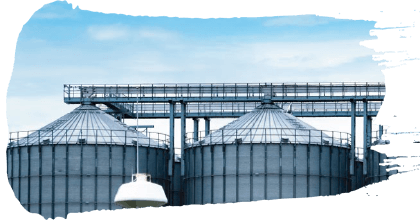

Aside from feed safety, what other tips can you give us to achieve the highest standards in terms of health and productivity in the aquaculture industry?
The European Commission defines animal feed as raw, semi-processed, or processed product as a substance with nutritional properties. In addition to the foods of animal origin, direct whole body/body parts of the plants, seeds, minerals, and vitamins are added to the aquafeed mixed formulation as a critical component. By-products of businesses that produce food for humans are also included.
Methods based on immunoassays have been promising in recent years. In general, these methods allow the recognition of specific antibodies to mycotoxins that mimic the behavior of antigens.
⇰ The ease, cheapness, sensitivity, and selectivity of these tests are used at the most reliable level regarding mycotoxin contamination. However, it should be considered that cross-reactivity may occur with structural analogs.
Furthermore, different detection methods are available today such as Raman spectroscopy, Infrared Spectroscopy, Biosensor-Based Method, and Chromatography analyses.
Mycotoxins pose a significant threat and danger to the feed raw materials supply chain and animal, human and environmental health. For this reason, limit values of local and international control mechanisms should be determined. In this way, all parts that are likely to be affected by these toxins are somehow protected.
 think the most economical way to prevent possible pathologies of preventing mycotoxicosis in feed is by the addition of mycotoxin binding additives.
think the most economical way to prevent possible pathologies of preventing mycotoxicosis in feed is by the addition of mycotoxin binding additives.With my current knowledge, I think it would be appropriate to advise the aquafeed and aquaculture industry and its stakeholders to ethically use mycotoxin binders within biosecurity and responsible farming practices.


What would be your take-home message to our readers regarding the prevention of mycotoxin exposure and its deleterious effects on animal health?
As I explained, we do not have the desired data set in terms of monitoring studies at the point of revealing the formation and presence of mycotoxins in aquaculture feeds worldwide.
In this context, with a previous researchers’ article titled “Mycotoxins in aquaculture: feed and food”, Rui A. Gonçalves et al. (2018) emphasized that the most significant challenges stem from the diversity of aquaculture species and the difficulties in ensuring the standard in obtaining local feed raw materials.
As a solution to these challenges, they also suggested that establishing a database of current mycotoxin formation data from farm animals would initiate the introduction of a holistic approach to awareness, monitoring, and prevention efforts.
⇰ They stated that the development of estimation methods based on the levels in raw materials by modelling to avoid extra costs for testing mycotoxin levels in formulated feeds would also contribute to gaining an idea.
Finally, the researchers emphasized that the risk of mycotoxins contaminating water resources by dissolving them from feed or washing from land should not be underestimated.
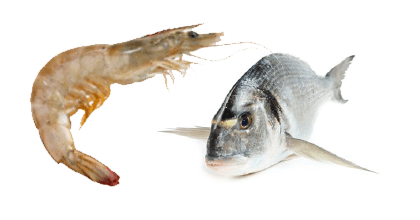
Since it is known that research shows that aflatoxins, like many mycotoxins, are prone to accumulation in fish and shrimp tissues, it is thought that the most appropriate way to prevent risks in human consumption is to detect and destroy them at the source.
 It is believed that the efforts to develop rapid test kits to recognize these toxic agents should be increased.
It is believed that the efforts to develop rapid test kits to recognize these toxic agents should be increased.
We know that we are only born once, so it is an undoubted fact that people are worthy of studies that will increase their accessibility to good-quality food sources in this short life.
It is another indisputable fact that the way to protect our welfare and health is to protect environmental health. To protect environmental health, all production sectors must feel compelled to ensure species-specific welfare, knowing the biology of plants and animals. I call this responsible care breeding.
We should offer products that we are sure of the content that our children can consume. We should not give up the moral attitude in all aquaculture processes.
Universal ethical values, which I describe as morality, will enable us to gain health and satisfaction when we provide welfare to living things with the opportunities offered by science and technology and, therefore, when we practice healthy breeding.
![]() In this sense, ethical practices will be valuable in terms of health management, food ethics and food security in every agriculture sector in the long run.
In this sense, ethical practices will be valuable in terms of health management, food ethics and food security in every agriculture sector in the long run.
References
Anita, A., Manyes, L., Meca, G., Ferrer, E., Luciano, F. B., Pimpao, C. T., & Font, G. (2016). Mycotoxins and their consequences in aquaculture: A review. Aquaculture, 451, 1-10.
Santos Pereira C, Cunha S. C., & Fernandes J. O. (2019). Prevalent Mycotoxins in Animal Feed: Occurrence and Analytical Methods. Toxins. 11(5):290. https://doi.org/10.3390/toxins11050290
FAO. (2007). On-Farm Mycotoxin Control in Food and Feed Grain. Good practices for animal feed and livestock series no. 1.
Turner, N. W., Bramhmbhatt, H., Szabo-Vezse, M., Poma, A., Coker, R., & Piletsky, S. A. (2015). Analytical methods for determination of mycotoxins: An update (2009–2014). Analytica chimica acta, 901, 12-33.
European Commission. (2013). Commission Regulation (EU) No 691/2013 of 19 July 2013 amending Regulation (EC) No 152/2009 as regards methods of sampling and analysis. Off. J. Eur. Union L, 197, 1-12.
Krska, R., Richard, J. L., Schuhmacher, R., Slate, A. B., & Whitaker, T. B. (2012). Romer Labs Guide to Mycotoxins. Englanti: Anytime Publishing Services.
Kaya, D., Genc, E., Palić, D., Genc, M. A., Todorović, N., Sevgili, H., Vasiljević, M., Kanyılmaz, M. & Guroy, D. (2022). Effect of dietary modified zeolite (clinoptilolite) on growth performance of gilthead sea bream (Sparus aurata) in the recirculating aquaculture system. Aquaculture Research, 53(4), 1284-1292.
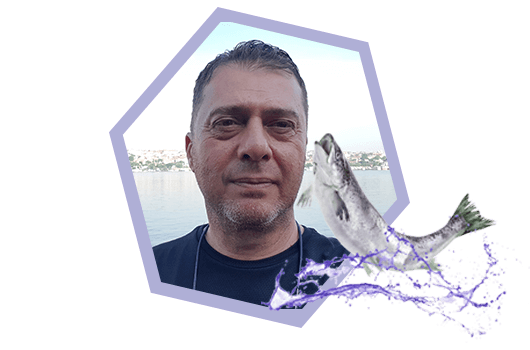
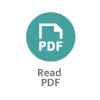

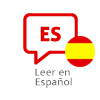
 Micotoxicosis prevention
Micotoxicosis prevention